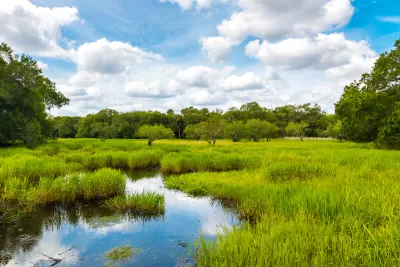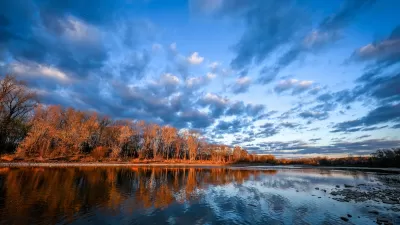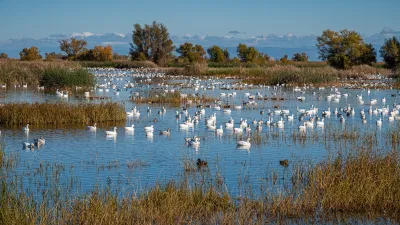A legal scholar suggests mechanisms for closing loopholes that limit the law’s effectiveness.

Writing in The Regulatory Review, Jackson Nichols outlines an argument by law professor Erin Ryan that the federal Clean Water Act (CWA), in its current state, doesn’t do enough to protect and preserve increasingly threatened U.S. waterways.
“In a recent article, Ryan contends that, by addressing quality alone, federal water governance fails to connect the ‘inextricably intertwined’ elements of water quality and quantity.” Ryan notes that “the regulation of water quantity—how much water remains within a regulated waterway—occurs almost entirely through state allocation laws independent of the CWA,” limiting the impact of the federal law.
For Ryan, “The roadblocks hindering the creation of comprehensive national standards are jurisdictional barriers, historical practice, pure practicality, and constitutional limits on federal power.” Thus, the CWA is ‘necessary but not sufficient’ to protect stretched water supplies and preserve bodies of water to protect from pollution.
Ryan recommends several legal tools that can be used to ‘plug the holes’ in the CWA and make it more effective legislation, including the public trust doctrine and the rights of nature movement, which call for the protection of natural resources for the benefit of both humans and nature. “Both speak to concerns “underserved” by conventional environmental law, both protect values underappreciated in cost-benefit analyses, and both embody last resort arguments in court.”
FULL STORY: Plugging Holes in the Clean Water Act

Alabama: Trump Terminates Settlements for Black Communities Harmed By Raw Sewage
Trump deemed the landmark civil rights agreement “illegal DEI and environmental justice policy.”

Planetizen Federal Action Tracker
A weekly monitor of how Trump’s orders and actions are impacting planners and planning in America.

The 120 Year Old Tiny Home Villages That Sheltered San Francisco’s Earthquake Refugees
More than a century ago, San Francisco mobilized to house thousands of residents displaced by the 1906 earthquake. Could their strategy offer a model for the present?

Ken Jennings Launches Transit Web Series
The Jeopardy champ wants you to ride public transit.

BLM To Rescind Public Lands Rule
The change will downgrade conservation, once again putting federal land at risk for mining and other extractive uses.

Indy Neighborhood Group Builds Temporary Multi-Use Path
Community members, aided in part by funding from the city, repurposed a vehicle lane to create a protected bike and pedestrian path for the summer season.
Urban Design for Planners 1: Software Tools
This six-course series explores essential urban design concepts using open source software and equips planners with the tools they need to participate fully in the urban design process.
Planning for Universal Design
Learn the tools for implementing Universal Design in planning regulations.
Clanton & Associates, Inc.
Jessamine County Fiscal Court
Institute for Housing and Urban Development Studies (IHS)
City of Grandview
Harvard GSD Executive Education
Toledo-Lucas County Plan Commissions
Salt Lake City
NYU Wagner Graduate School of Public Service





























